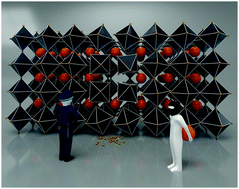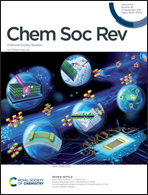Defect engineering of oxide perovskites for catalysis and energy storage: synthesis of chemistry and materials science
Abstract
Oxide perovskites have emerged as an important class of materials with important applications in many technological areas, particularly thermocatalysis, electrocatalysis, photocatalysis, and energy storage. However, their implementation faces numerous challenges that are familiar to the chemist and materials scientist. The present work surveys the state-of-the-art by integrating these two viewpoints, focusing on the critical role that defect engineering plays in the design, fabrication, modification, and application of these materials. An extensive review of experimental and simulation studies of the synthesis and performance of oxide perovskites and devices containing these materials is coupled with exposition of the fundamental and applied aspects of defect equilibria. The aim of this approach is to elucidate how these issues can be integrated in order to shed light on the interpretation of the data and what trajectories are suggested by them. This critical examination has revealed a number of areas in which the review can provide a greater understanding. These include considerations of (1) the nature and formation of solid solutions, (2) site filling and stoichiometry, (3) the rationale for the design of defective oxide perovskites, and (4) the complex mechanisms of charge compensation and charge transfer. The review concludes with some proposed strategies to address the challenges in the future development of oxide perovskites and their applications.



 Please wait while we load your content...
Please wait while we load your content...